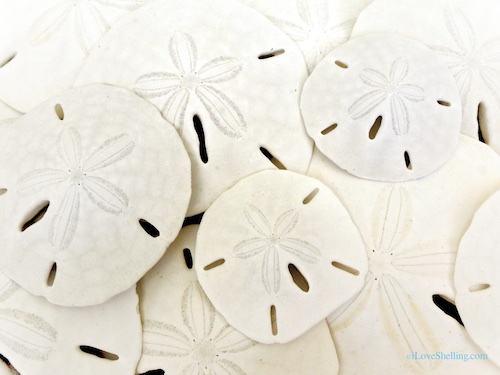
It’s thrilling to see a live SAND DOLLAR at low tide half buried in the sand and water, isn’t it?
It’s also thrilling to see bleached out SAND DOLLARS washing in with the tide as well, right?
But how do you know if a SAND DOLLAR is alive or not when it is isn’t bright white?
If a SAND DOLLAR is dark in color and half buried in the sand and/or water, it is most likely still alive and we should let it stay in its place in the water.
There have been times I have posted photos of SAND DOLLARS in my bucket that were grey in color. This has been a concern to folks who were worried about whether or not I collected live SAND DOLLARS. First of all, I would never collect a live SAND DOLLAR. But I completely understand the concerns from anyone who wants to make sure nobody takes a living creature out of its habitat – especially just to take it home for a souvenir.
So here’s the way to tell if it’s alive or not… Look for the CILIA and velvety skin. These are the things that keep the animal alive and on these SAND DOLLARS… they are missing so they are not alive any more. These are now just the TESTS of the animal… like the shell (although its not technically a shell).
Do you see how the edge and surface of this SAND DOLLAR looks like it has fur?
SAND DOLLARS have short SPINES covered in CILIA (tiny hairs) so it can move along the sand and grasses. Along with those “hairs” are TUBE FEET (which look like “fur” to me too – heehee) which is actually how the SAND DOLLAR breathes.
I bet now, you can look at this next photo and see that all of these baby SAND DOLLARS in Clark’s hand are alive. After I snapped this photo, he put them back in the water.
You can see it here too, right? These need to go back into the water where they belong.
So now take a look at this next photo…. is this still alive? No. Even though this SAND DOLLAR is still gray in color, there’s no possible way it could be alive since there are no SPINES nor CILIA nor TUBE FEET. It has no way to breathe or move without those things.
Julianna shows us that the SAND DOLLAR to the left of the photo is still alive and the other one on the right side of the photo has no “fur” whatsoever. She is a good steward of the earth so she put the live one safely back in the water and she gave the other “hairless” one to her mom for safekeeping.
Most days you will see sun bleached SAND DOLLARS just like this…. Hairless! Furless! Completely “Bald”! haha
So next time you see a SAND DOLLAR while walking the beach, remember to leave it alone if it’s dark and hairy but if you are unsure if it’s alive… take your time to inspect this amazing creature before you assume it’s a “keeper”. Look for any signs of hairs, fur or velvety skin.
Now you can bet your bottom DOLLAR you’ll know when to leave those sweet living SAND DOLLARS alone…
and when you can jump for joy when you find that keeper almighty DOLLAR.
Oh, and I took a short video of a cutie little juvie LIVE SAND DOLLAR to show you how they move those little hairs around. I hope this helps!
PS- Most of these photos are from articles I’ve published in the past, just click on each photo to be linked to those posts.

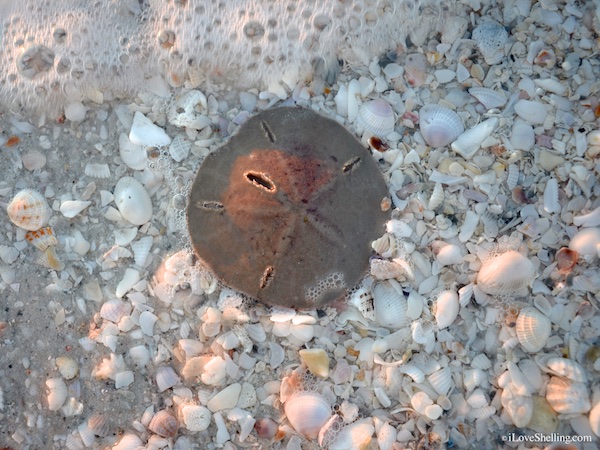
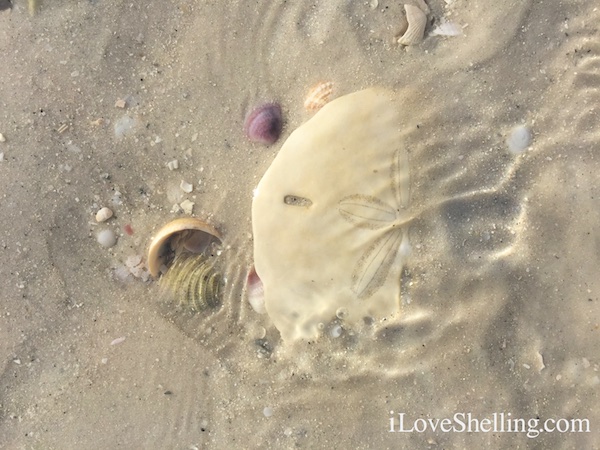
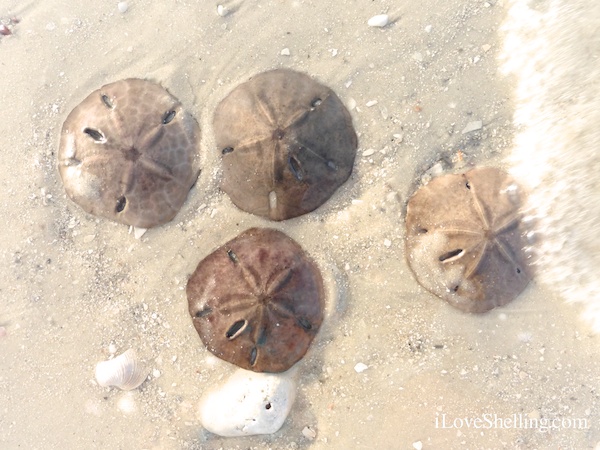
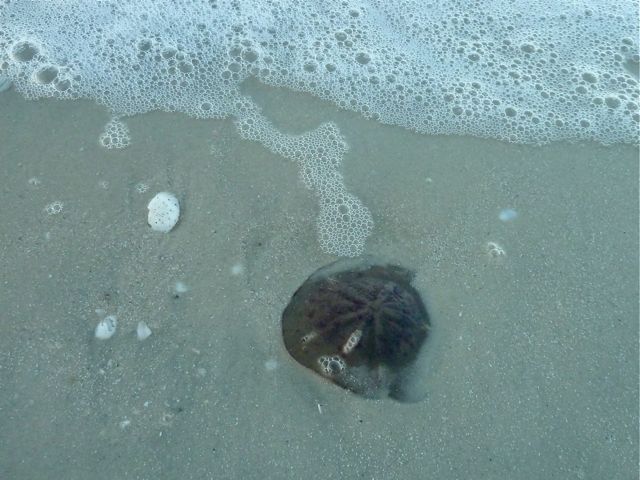
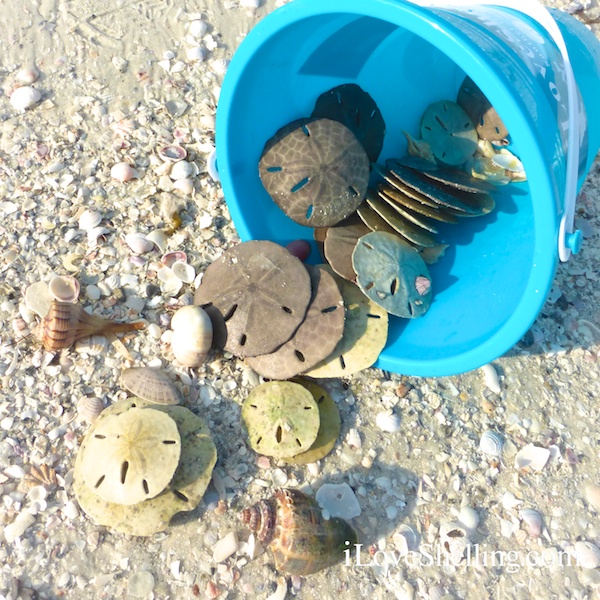
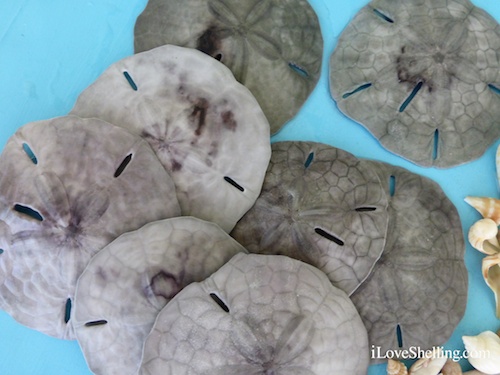
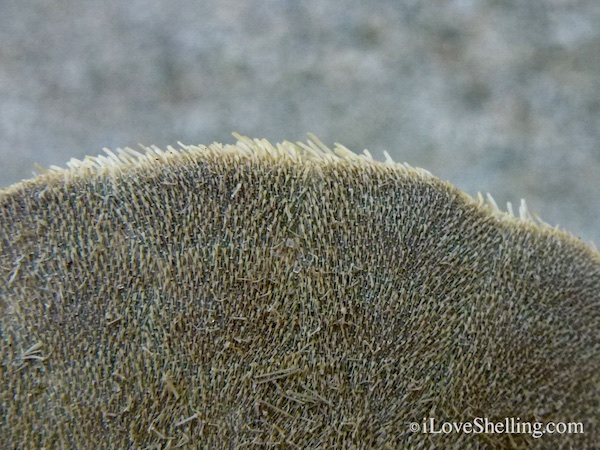
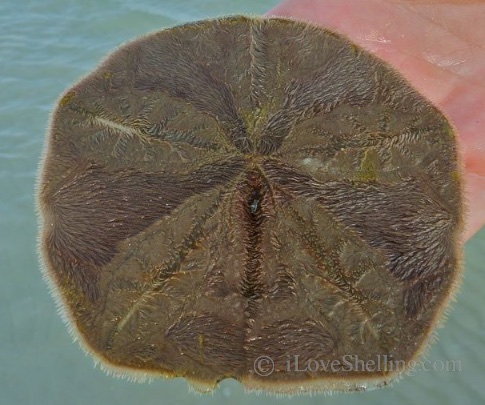
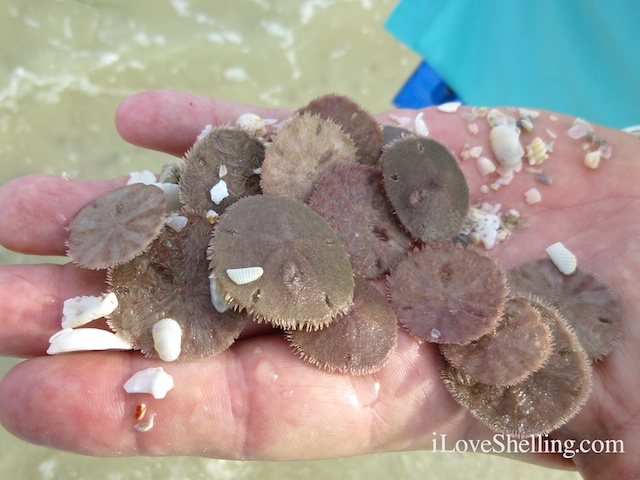
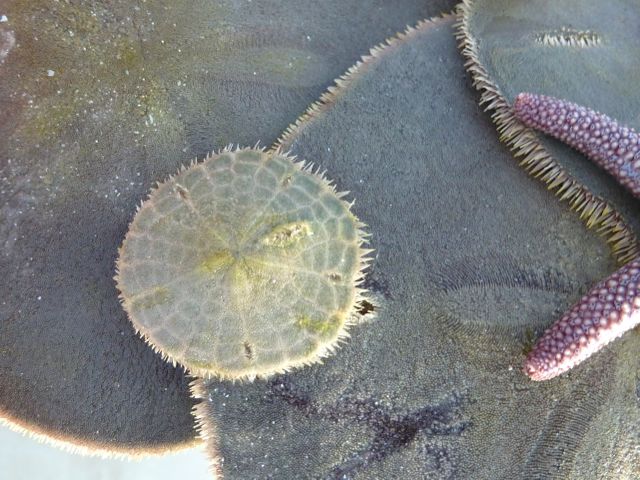
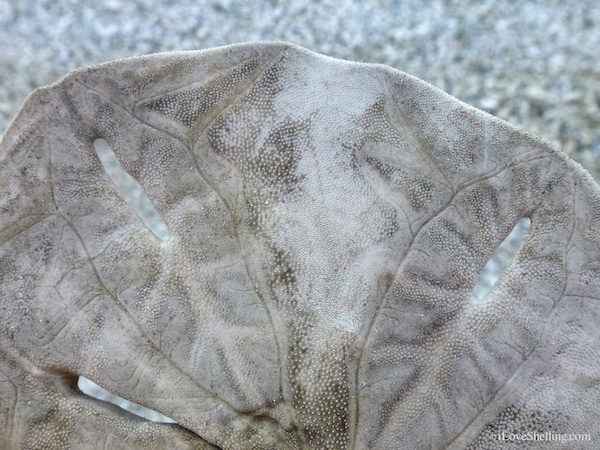
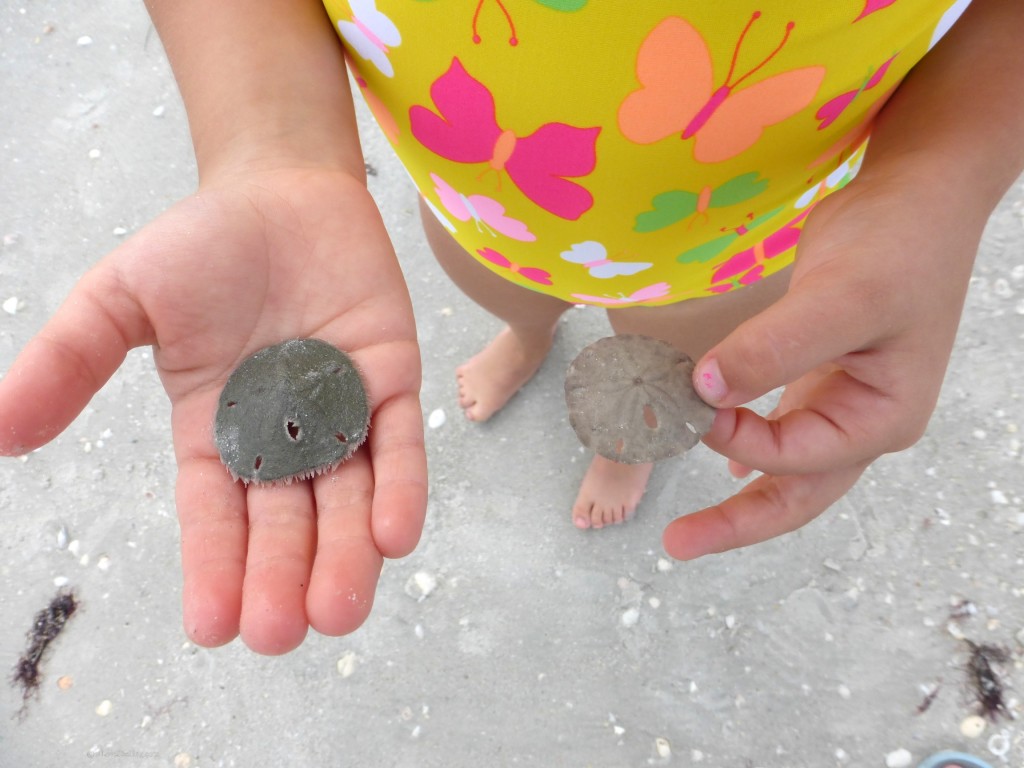
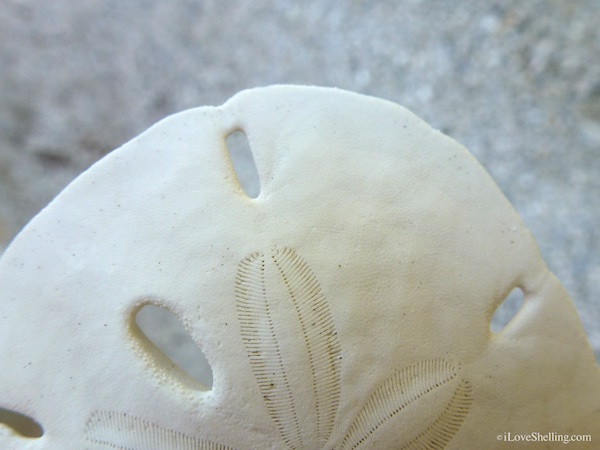
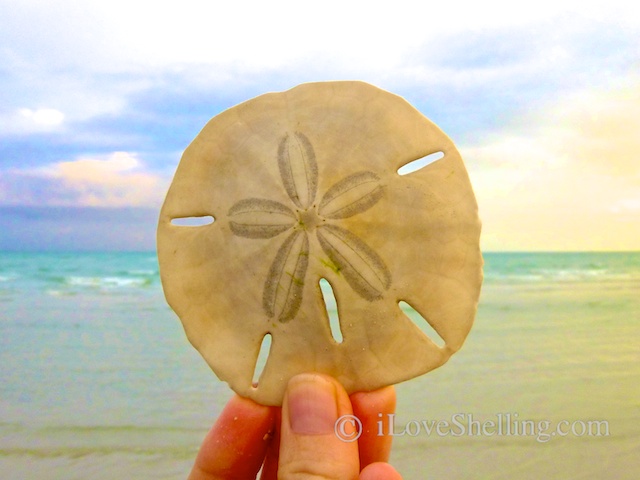
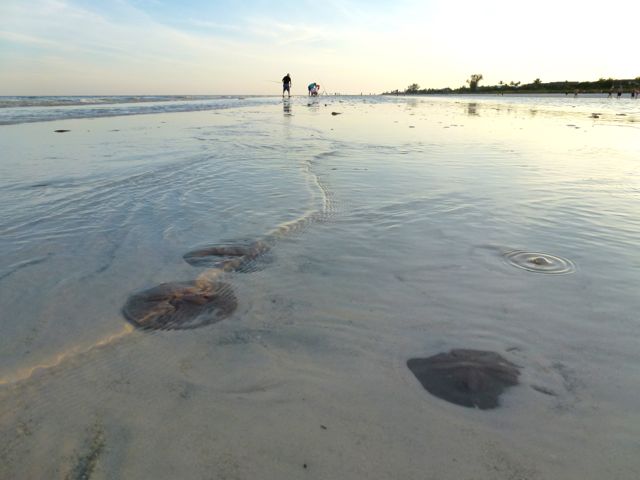
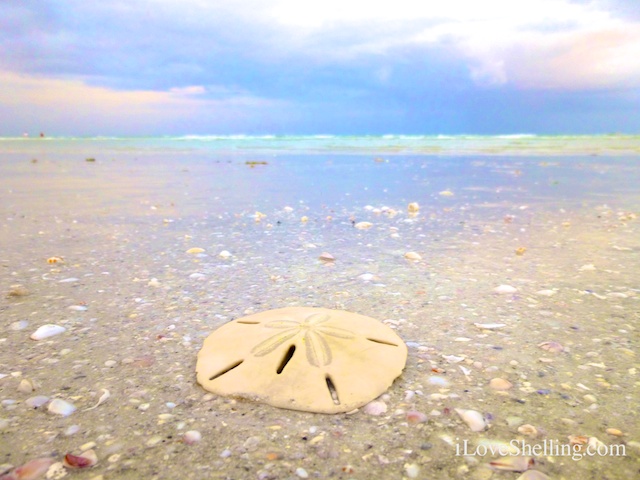

Indeed many communities take this topic very seriously…on the walkways to the beaches at Tybee Island Georgia (east of Savannah) are big signs that say “Take The Test” showing the differences to beachgoers….you can see one of these by doing a google image search of “Tybee Island…take the test”
I always love the educational posts you do! Where I stay in Naples, we find both gray and white dead sand dollars. Once I found a brown one and I wasn’t sure if it was alive or not. I went over to a lifeguard and asked him how to tell. He said, “If it pees on you, it’s alive.” Apparently, the live ones stain your fingers yellow. Sure enough, my fingertips were stained! I found two more that did that and returned them to the water, but I don’t remember seeing ‘hairs’ on them. Have you ever heard of a peeing sand dollar? Is this an accurate way to tell?
Hahah well I’ve never heard it being called “peeing” haha but yes, they do turn yellow and discharge a yellow stain when they are feeling stressed. You can see a little yellowish color on the 11th photo down- that baby was on of the water too long. One shouldn’t wait until the turn yellow to put them back in he water. Or… Don’t wait until they pee!!! Lol
I found one that was dark and furry but it was broke in half…Can it still survive?
Hi,
Great article and very informative. I haven’t been lucky enough to find one of these beauties yet but still hoping every time I stroll the beach. I was wondering though…..if you do see one in the shallow water like your video shows, should you not try to get it into deeper waters? It seems like it would eventually die if left there or somebody else may not know the difference and it’s fate is sealed.
Please inform…thank you so much for your great website on shelling.
They live in shallow waters so We see them exposed when the tide is low. The tide will cover them quickly so no need to worry- that’s their life!
very good post with an explanation that says it all cannot say it any better everyone should abide by the rules and let the live shells keep living and look for the ones that are dead there are plenty for everyone to get if they keep looking this post sets every thing the way it should be thank you the great info looking forward to your next text your friend r.g. stein
I’m 50 years old and I visited the Atlantic Ocean for the first time ever this week. That’s how I found you, looking up live sand dollars.
I never saw a live one till I went to Folly Beach in Charleston, SC. I was sitting in the water letting the waves beat me up when I put my hand down and felt something. I picked it up and was absolutely thrilled to find a live sand dollar in my hand. I called to my husband to get the phone so I could get a couple of pictures of it. Stupid me, I left the ‘real’ camera at the campsite or I would have had a video. I waded out and threw it back when I was done petting it.
Bizarrely, I’m riding home right now wearing my Sanibel Island t-shirt that I found at Goodwill in Tennessee, and I lived in Lee County, FL for 35 years.
My family and I are planning to go to Sanibel Island in December, but I’m kind of scared about taking a live shell home with me accidentally. Is there some kind of way to tell if any type of shell is dead or alive? And are there shells that might be alive but you can’t see the body in them?
Nice post, it was really helpful, thanks!
We are planning to visit Sanibel for the 3rd time! On our last visit we bought my husband a shell scooper similar to what Clark uses. My question is what type shoes did you mention in a former post that he had started using? Tried different things, but hard to find comfort, protection & keep sand from washing into shoes.
This was very helpful, thank you so much. I live in NJ and we don’t see sand dollars here very often. They are showing up now in sand that was dredged for beach replenishment. I found a live one today before I found your site. I’m glad I made the right call and put it back. Later, I found several tiny dead ones. A very rare treat here!
I’m so glad I came across this post. I never knew any of this info., and read this to my children so they know the difference.
Found a sand dollar at Oceanside pier today. Still had a “furry” underside and it was dark colored. My 11 year old daughter released it back into the ocean since we thought it might still be alive. First live one I’ve ever seen.
I have a sand dollar that is still brown. It never showed any signs of being alive. No fuzz on the bottom or any of that. It never has turned white after years. Why is it still brown? I barely remember picking it up but it wasn’t down in the water, I’m pretty sure. I try very hard not to take live creatures. Any ideas? Thanks so much in advance!